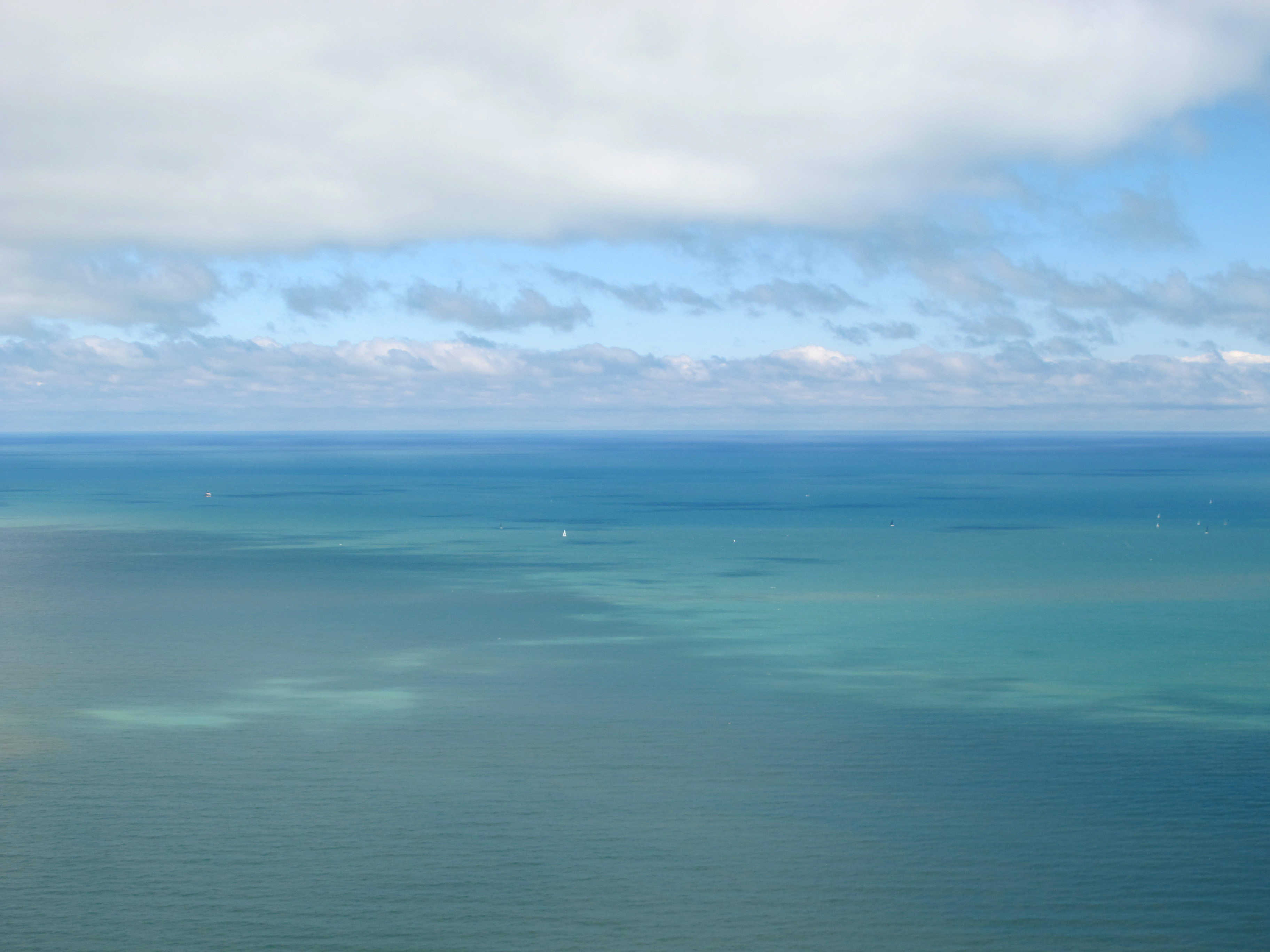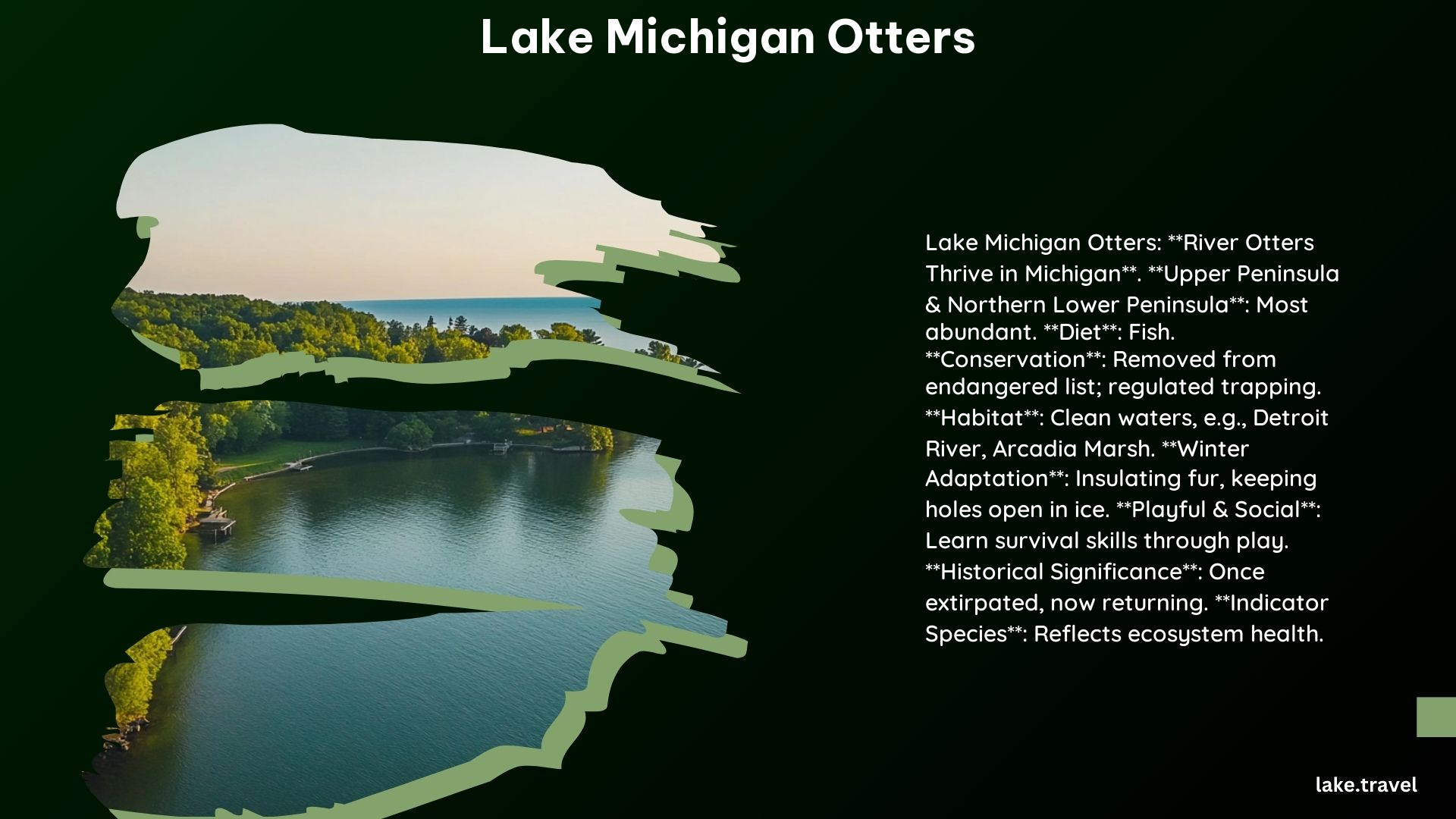North American River Otters (Lontra canadensis) are a common sight in the waters of Lake Michigan, particularly in the northern regions of the Great Lake. These fascinating creatures are known for their playful behavior, excellent swimming abilities, and important role in the local ecosystem.
Habitat and Distribution

River otters are well-adapted to life in and around Lake Michigan. They thrive in areas with access to water, such as rivers, lakes, swamps, and coastal shorelines. In Michigan, they are most abundant in the Upper Peninsula, but can also be found in the northern Lower Peninsula and various watersheds in the southern Lower Peninsula.
Conservation Status

Historically, river otters were abundant in Michigan, but their population was nearly wiped out due to habitat loss and fur trading. However, thanks to conservation efforts, their numbers have been steadily increasing over the past few years. They were once on Michigan’s endangered species list, but are now making a strong comeback, with their return to the Detroit River being a sign of improving watershed conditions and ecosystem healing.
Primary Food Sources
As carnivorous and opportunistic predators, river otters in Lake Michigan rely on a variety of food sources to sustain themselves. Their primary prey includes:
- Fish: Perch, suckers, catfish, sunfish, darters, and other fish species found in the lake.
- Crustaceans: Crayfish and freshwater clams are also part of their diet.
- Amphibians: Frogs and salamanders may occasionally be consumed.
- Small Mammals: Mice, squirrels, and other small mammals may also be preyed upon.
Interesting Facts
- River otters are excellent swimmers, able to stay underwater for up to eight minutes.
- They have a thick, water-repellent coat of fur that helps them stay warm in the cold waters of Lake Michigan.
- River otters are known for their playful behavior, which helps them develop important survival skills.
Conclusion
The return of river otters to the waters of Lake Michigan is a testament to the ongoing efforts to restore and protect the region’s natural habitats. These charismatic creatures play a vital role in the local ecosystem, serving as both predators and indicators of a healthy environment. By understanding their habitat, conservation status, and dietary preferences, we can better appreciate the unique and fascinating world of Lake Michigan’s river otters.
References
- Manistee News. (2023). Wildlife Wednesday: Otters find space to play. https://www.manisteenews.com/news/article/wildlife-wednesday-otters-find-space-play-17783630.php
- Wikipedia. (n.d.). North American river otter. https://en.wikipedia.org/wiki/North_American_river_otter
- Bridge Michigan. (2022). River otters return to the Detroit River, sign ecosystem is healing. https://www.bridgemi.com/michigan-environment-watch/river-otters-return-detroit-river-sign-ecosystem-healing
- 97.5 NOW FM. (2022). You Otter Know: All About Michigan’s River Otters. https://975now.com/michigan-river-otters/.
